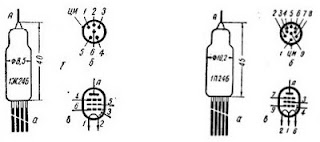 |
| Nuclear fusion plant of the future |
11 Sept 2011
Nuclear Fusion - our energy needs met soon?
Labels:
nuclear fusion
8 Sept 2011
Success on 137kHz QRPp
 |
| My 137kHz 0.2mW ERP signal by M0BMU at 69km |
LF kit improvements
 | |
| 24W 137kHz QRSS30 beacon TX (ERP 0.2mW) |
 |
| 137.5kHz 24W transverter (for WSPR) 0.2mW ERP |
Today I completed the first stage of my ERP improvement programme on 137kHz completing the rebuild of the QRSS30 beacon and the transverter used for WSPR on the band. Photos attached show both of these. My ERP has now increased to around 0.2mW with both rigs. The output from the PA stage in both rigs is around 23-24W. More power will be easily possible by raising the PA supply voltage later.
7 Sept 2011
Sputnik valve TX tests
This afternoon G6ALB and I got together to build a 2 valve 21MHz transmitter using a couple of Russian valves of the same types used in the original Sputnik 1 satellite in 1957. Surprisingly I've never built a valve transmitter before. Even today, Andrew did most of the building. My input was to wind a toroid and to help sort out the wire ends of the two valves. The valves were kindly supplied by Mike AA1TJ. The breadboarded TX is shown in the picture. On a test this evening over the 3km path between our QTHs the 400mW TX was copied fine on my IC703 and 10m halo antenna. Even at the lowest HT voltage (around 30V) his signal was still solid copy on the "Sputnik". Our aim is to have a pair of these units ready for Sputnik Day (Oct 4th) and to work each other and other more distant stations who are using similar rigs. See also http://aa1tj.blogspot.com/2011/07/sputnik-qso-party-transmitter-prototype.html
6 Sept 2011
Higher power on 137kHz
Today I did some work on increasing the output power of my 137kHz transverter used for WSPR, with mixed results. When driving the IRF540 PA with a decent square wave I can get around 24W out (was around 5-8W) from a 13.8V supply with decent efficiency. When using the drive from the mixed-down transverted signal I am having less success. The issue is driving the MOSFET gate from a really low impedance and ensuring it is as square as possible with the right mark-space ratio. Most 137kHz transmitters do this by driving at 274kHz with ICs designed to drive a pair of MOSFETs whereas I want to go in at 137kHz using discrete parts. This is a solvable challenge and I'll have this up and running in a few weeks. 25-30W would give me 6-8dB ERP improvement and more should be possible from a higher PA supply voltage. This would take my ERP up to around 0.5mW ....heck that's high power for me!
Labels:
137khz
5 Sept 2011
More QRPp testing on 137.7682kHz
My QRSS30 137.7682kHz beacon is on until 0800z Tuesday morning sending XBM in QRSS30 with the full call at 10wpm periodically for full ID. Reports (including no copy) would be much appreciated. I'm hoping to improve on the recent best DX a few days ago - a report from G3WCB at 101km who got the signal pretty well at times despite the 140uW ERP.
4 Sept 2011
CW training on the internet
If, like me, your morse code could be improved then you may like to go to http://lcwo.net/main and see the array of training material available there. It is probably the best place on the internet where you can brush up your skills.
Labels:
cw,
morse code
Sunspots
At the moment we seem to be seeing quite impressive sunspot numbers, at last. See http://www.solen.info/solar/ . This bodes well for this coming autumn and winter which should see 10m well open to the USA on a regular basis by October. Such conditions offer the chance of transatlantic AM QSOs between 29-29.1MHz even with quite low power. In previous sunspot maximums it has been possible to work AM DX with just a few watts to a mag-mount on the car. AM makes a change from SSB.
Labels:
10m AM
Boy's Book of Crystal Sets
One of my favourite books when I first got interested in radio back in the 1960s was the Babani series book number 126 entitled The Boy's Book of Crystal Sets. The link takes you to a PDF copy of this book. I was fascinated by the shortwave version shown in the book and remember building a variety of it using parts I had. It was such fun copying distant DX stations with something so simple. Years later I managed to copy Radio Havana, All India Radio and even (directly from Australia) Radio Australia on a simple crystal set. All good simple fun showing the magic of radio. There are several websites on the internet today dealing with the design of sophisticated crystal sets capable of quite exceptional preformance.
Labels:
babani,
crystal set
1 Sept 2011
Improved QRSS30 beacon on 137.769kHz
Subscribe to:
Comments (Atom)





